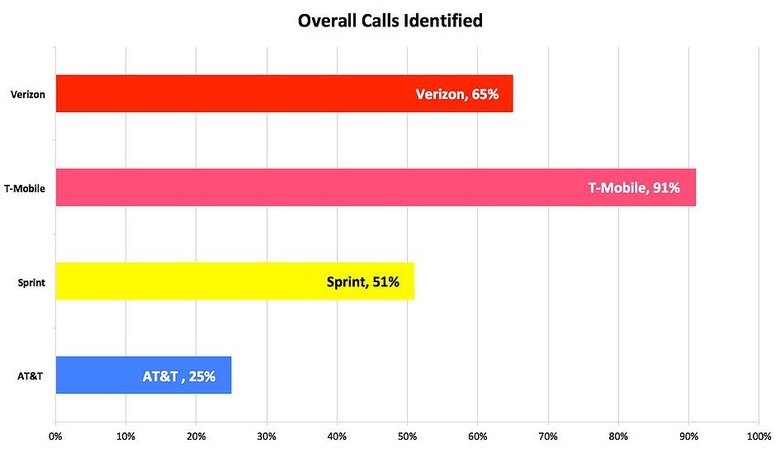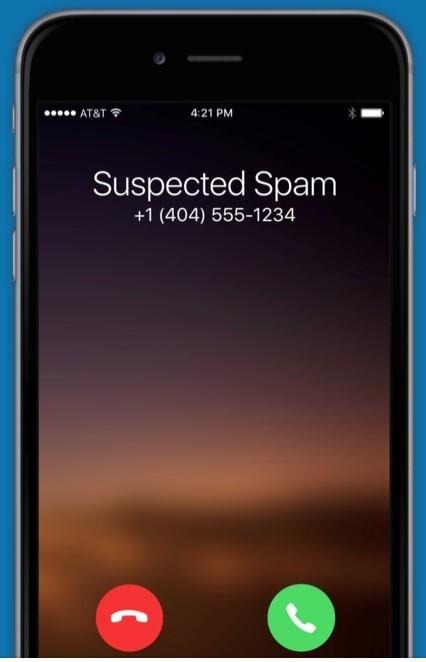Shuffle PrivateLine: Putting Robocalls On Notice [#sponsored]
If you thought the spam situation on the Internet and mobile devices is bad, you should get a load of what's happening over ye ol' telephone lines. Robocalls have been plaguing the country for months, years even, and there doesn't seem to be any indication that the numbers are going down anytime soon. And that's with advertised solutions already in place, some coming from carriers directly and others through third party vendors. Some of those used to very basic methods of identifying robocallers. Others even employ their own users to help build up their blacklist database, sometimes at the risk of users' privacy. Clearly, there's more than enough room for a better and, more importantly, smarter solution and Shuffle Ventures' upcoming AI-powered PrivateLine might be the key to ending robocalls once and for all.Sponsored content by Shuffle Ventures, Inc.
I, Robot
What are robocalls anyway? And why have they become not only so egregious but also so dangerous? Robocalls may have started innocently enough as a form of automation and process efficiency. Instead of having some human make outgoing calls in rapid succession, an automated system dials out a number and plays a pre-recorded message with instructions. If all goes well, at least for the caller, the person on the other side will dial a number that connects him or her with an actual human being.
Such a system is efficient, but not always effective, a way of propagating valid announcements or appointment reminders. More often than not, however, robocalls are used for marketing and unsolicited calls, a.k.a. spam. And that "spam" soon turned into "scam".
According to the most recent tallies, an increasing number of robocalls are designed to trick people into giving up sensitive information that could later lead to identity theft or outright theft. A combination of technology and good (really bad) old social engineering, from impersonating IRS agents to luring the unwitting with loans, have made robocalls a lucrative enterprise. And it isn't just the nature of these robocalls that makes them alarming. Their numbers are downright frightening.
The Hard Numbers
Robocalls might sound like a nuisance at best, but they're a catastrophe waiting to happen. In fact, that catastrophe might have already happened for some unwitting victim. But even without a massive case of fraud hitting the headlines, the statistics alone give a horrifying view of the sheer magnitude of robocalls in the US, which, in turn, highlights the sheer audacity of the people behind the machines.
In November 2017, the number of robocalls made in the US reached a staggering 2.74 billion, a 15% increase from November of the previous year. That meant that in just 11 months, there have been 27.7 billion robocalls in 2017. That effectively meant an average of 89.6 million calls per day, which each person in the US getting around 8 calls per day. That has brought the total for the whole year to 30.5 billion, up from 29.3 billion in 2016.
The surge in the number of calls in the last two months of 2017 is by no means by accident. Scammers and fraudsters cunningly take advantage of the season when people might be desperate enough to get some more money or, conversely, get out of debt. And then there are those "semi-legitimate" calls that try to get those people to pay their debts, but often it's difficult, almost impossible to differentiate the real from the fake. In other words, there is a dire need to be able to flush out and block these unwanted calls. A need that has so far been left unanswered sufficiently.

Laying down the law
The situation has gone so out of control that the Federal Communications Commission, as well as the Federal Trade Commission, eventually stepped in. Not that they had much choice. They, too, were receiving a barrage of calls, this time from angry consumers and constituents demanding that the government take action.
And act they did, though not entirely effective. The FCC's National Do Not Call Registry blocked as many as 230 million numbers, though most from cold-callers rather than robocallers. Both FCC and FTC sued people behind the robocalls, but only if there have been enough complaints against particular numbers. Consumers have criticized these methods as more of band-aid solutions rather than long-lasting cure.
Finally realizing it couldn't do it alone, the FCC last year implemented rules that practically deputized carriers to help in policing their own networks. It authorized networks to block calls they deemed to be robocalls, without fear of being penalized for violating another FCC rule that requires them to complete all calls. In other words, the FCC has tasked carriers to implement and become their own caller ID and call blockers for robocalls, though the effectivity of these carriers still leaves a lot of room for improvement, and a lot of holes for robocalls to get through.
Testing the waters
Each of the four major US carriers responded in a different way, implementing different methods to protect their customers, and, unsurprisingly, produce different results. AT&T and Verizon make use of a mobile app to screen and block calls while Sprint and T-Mobile have the feature built into their networks, regardless of phone or OS. Leading mobile applications testing house Lionbridge set out to see just how effective these carrier solutions are in protecting their subscribers from scams and frauds.
Shuffle Ventures, a startup whose mission is to provide topnotch security and privacy for phone users, provided Lionbridge with 1,000 US phone numbers that were composed of known and verified telemarketers, suspected spammer, fraudulent callers, as well as some regular consumer and business numbers. Lionbridge then placed 1,000 calls, a hundred per day, on 8 phones. Each of the four major US carriers was allocated two phones, one being an iPhone and the other an Android Samsung Galaxy phone. While the success rates at spotting spam, fraud, and other unwanted calls across the carriers were generally positive, none was good at flagging every type of problem call across the board.
Lionbridge rated each carrier's success rate in three categories: scam/fraud, spam/telemarketing, and caller ID for legit consumer and business numbers. Many of the carriers performed OK, but not exactly well. Sprint had less than 1% success rate on Scam and Spam identification but did well on Caller ID. AT&T's Call Protect app on iOS and Android didn't provide Caller ID features at all (the carrier's separate caller ID app wasn't compatible with the Galaxy S8 that Lionbridge used for testing). And Verizon's Caller Name ID app did terribly in identifying scam numbers.

Overall, T-Mobile had the most promising figures. It was able to identify 90% of fraudulent numbers and 78% of valid ones. And while its performance in weeding out telemarketing calls isn't the highest, it comes close to it and beats out the others. Shuffle attributes T-Mobile's high success rate to its in-network system, versus an add-on app, as well as its technologies. In contrast, other carriers' app-based solutions struggle to provide universal protection, identification, and coverage.

While T-Mobile is clearly ahead of the game, 91% is still quite a distance away from 100%. With 30.5 billion robocalls, that means a sizable 2.7 billion calls still get through. And that's not even considering yet the less than stellar performance of the other three major US carriers, or of the smaller ones that some consumers flock to. Clearly, we still need a better, not to mention more universal, solution.
Cures as bad as the disease
Make no mistake, there are indeed existing products and services that try to give consumers the weapons to, at the very least, identify who's calling. Yet despite being around for years, these have obviously been ineffective at curbing robocalls. And not only are these third-party solutions insufficient, some of them pose a risk for the users who put their trust in them.
Many of the caller ID and anti-spam apps and services don't have access to the same repository of suspect numbers that the FCC and carriers have. They are, to be fair, forced to get their data elsewhere. Usually, that means crowdsourcing numbers, which opens a different can of worms. Some users may agree to provide their own number for the benefit of enlarging that database, but others whose numbers are in the user's address book might not be so generous, especially when they aren't even aware that their numbers have become part of a nationwide database.
Almost all of these services will also promise to never provide your data to a third-party for profit. They will, however, make concessions in the name of "improving services". And even if you trust them, which is practically the default with today's Internet services, that doesn't take into account the possibility that the service provider's database might get compromised and leaked.
PrivateLine: know the who and the why
There is clearly a need for a better solution, one that isn't so beholden to a database, especially one sourced from its own users. We need a solution that is also able to adapt and scale to the advancing skill of robocallers and criminals. And there is one launching soon that promises exactly that.
This year, Shuffle Ventures will launch its new PrivateLine product, a whole new level up from its existing Shuffle service. Whereas Shuffle is more about giving you throw-away phone numbers, PrivateLine offers not just a more permanent second number but also a more private one at that. PrivateLine gives users a second number that they can use for business transactions without having to worry about giving out too much of their personal details. But more than that, it also protects customers against spammers and scammers in a novel and ingenious way.
Many new products and services today flaunt this or that feature powered by artificial intelligence, machine learning, and neural networks, and who is Shuffle to buck that trend. PrivateLine utilizes those same technologies to more accurately identify callers, without relying simply on the calling number alone. Instead, it uses machine learning to listen and analyze the message that the caller is making. It will then try to determine whether that message sounds like a scam or not. So even if the scammer hijacks a valid number in order to spoof caller IDs, it will still be ineffective. The call is ultimately judged based on its message and not simply on the number that is used.
Even better, PrivateLine will let you decide how exactly you want to handle the call that does pass its scrutiny. It's not a simple Yes or No response. You can opt to take the call, block the caller, send the call to your voicemail, or even simply drop the call without sending it to voicemail. PrivateLine not only offers a smarter bouncer, it also gives you better control.
Technology, like any other tool, is a two-edged sword. In the wrong hands, it can easily be used to spread misinformation and crime. As scammers and persistent debt collectors become smarter, so must our weapons. And what better way to do that than by using the same technologies that are making our phones and homes smarter to make our lives safer. Get PrivateLine sign-up page

